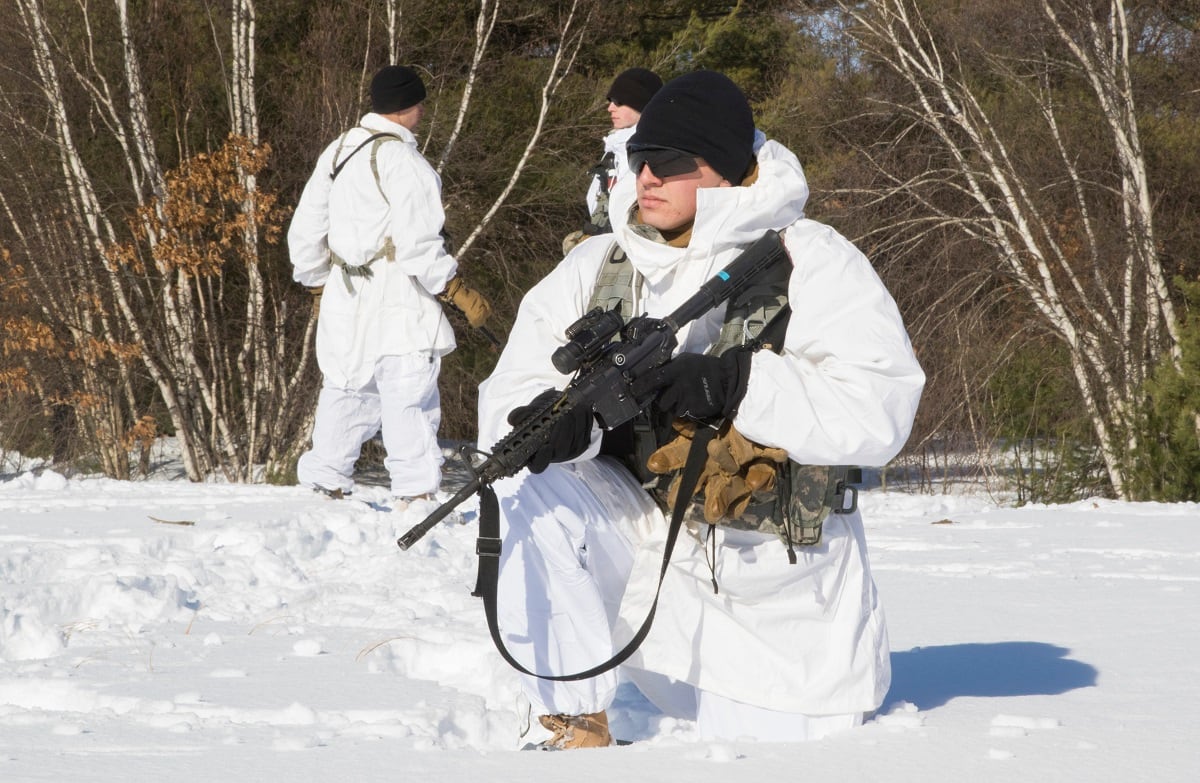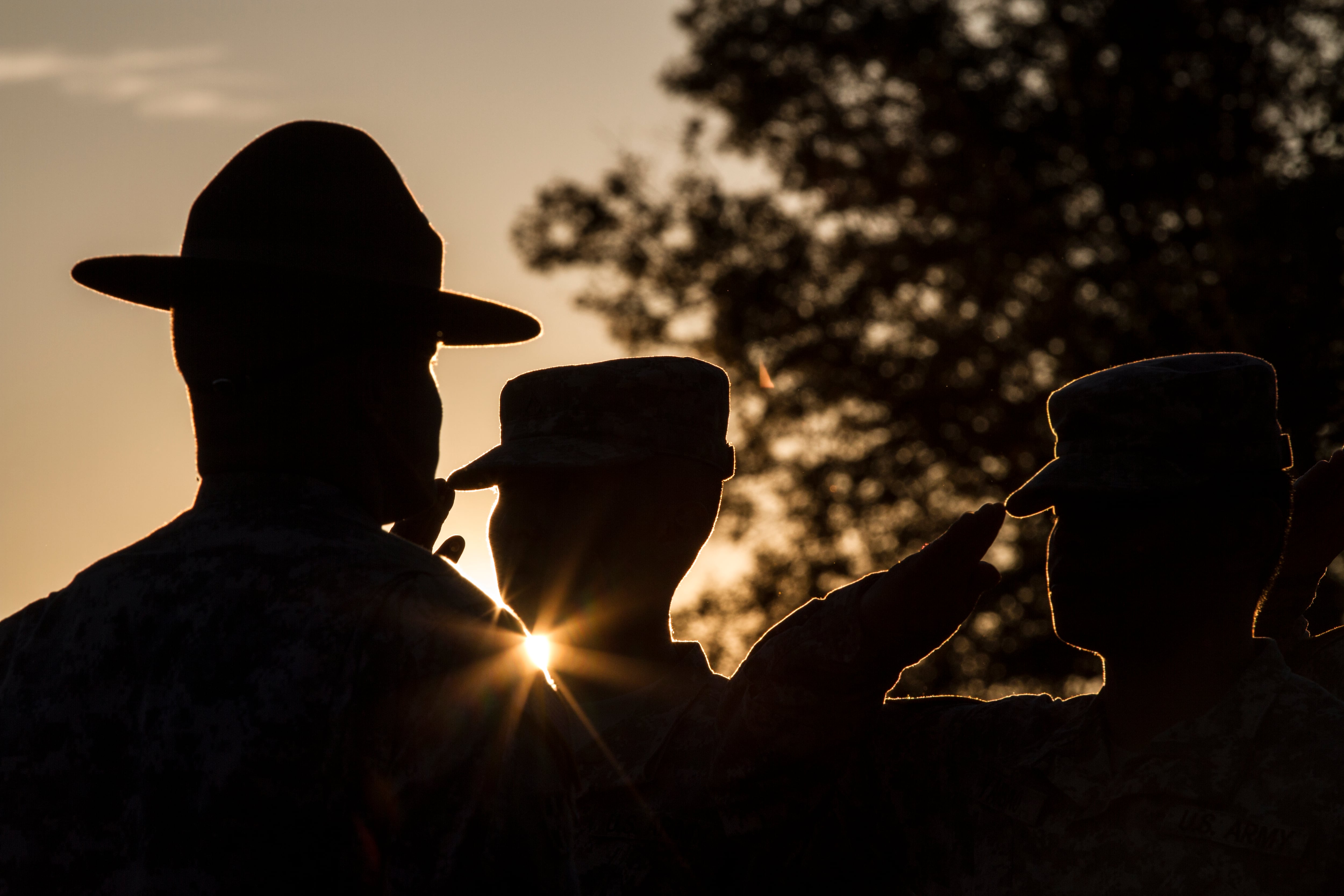Soldiers have known for generations that it’s cold at Fort Drum, New York.
But now that the Army has made it official, soldiers with the 10th Mountain Division are fielding new gear and hosting major training events to improve their ability to fight when it freezes.
“We don’t want [the cold] to hibernate us,” said 1st Sgt. Daniel Bryan, first sergeant for the division’s Light Fighters School. “We want to be physically and mentally prepared.”
For decades in both the Army and Marine Corps, cold weather land warfare has taken a back seat to desert fighting. But both services are now putting manpower, funding, equipment and training back into a potential cold weather fight in the face of a resurgent Russia and nervous NATO allies.
Fighting in the cold and in the mountains isn’t as simple as putting on an extra layer of clothes.
“You have to train to the environment, you can’t just show up and expect to survive,” said Brig. Gen. Brian Eifler, the 10th Mountain Division’s deputy commanding general.
Best practices
In 2015, Fort Drum received a Zone 7 designation, up from Zone 5, putting it in the same classification as Fort Wainwright, Alaska, and Camp Ethan Allen in Jericho, Vermont.
While units on Fort Drum were already doing mountain and cold weather training, the change pushed an additional $12.5 million for equipment and infrastructure to allow soldiers to do more.
Last week, Fort Drum hosted the Army’s annual winter symposium, which Eifler said was the largest gathering so far.
The event has existed in some form for about a decade and is often held in Alaska, but it now rotates between U.S. Army Alaska and Fort Drum.
RELATED
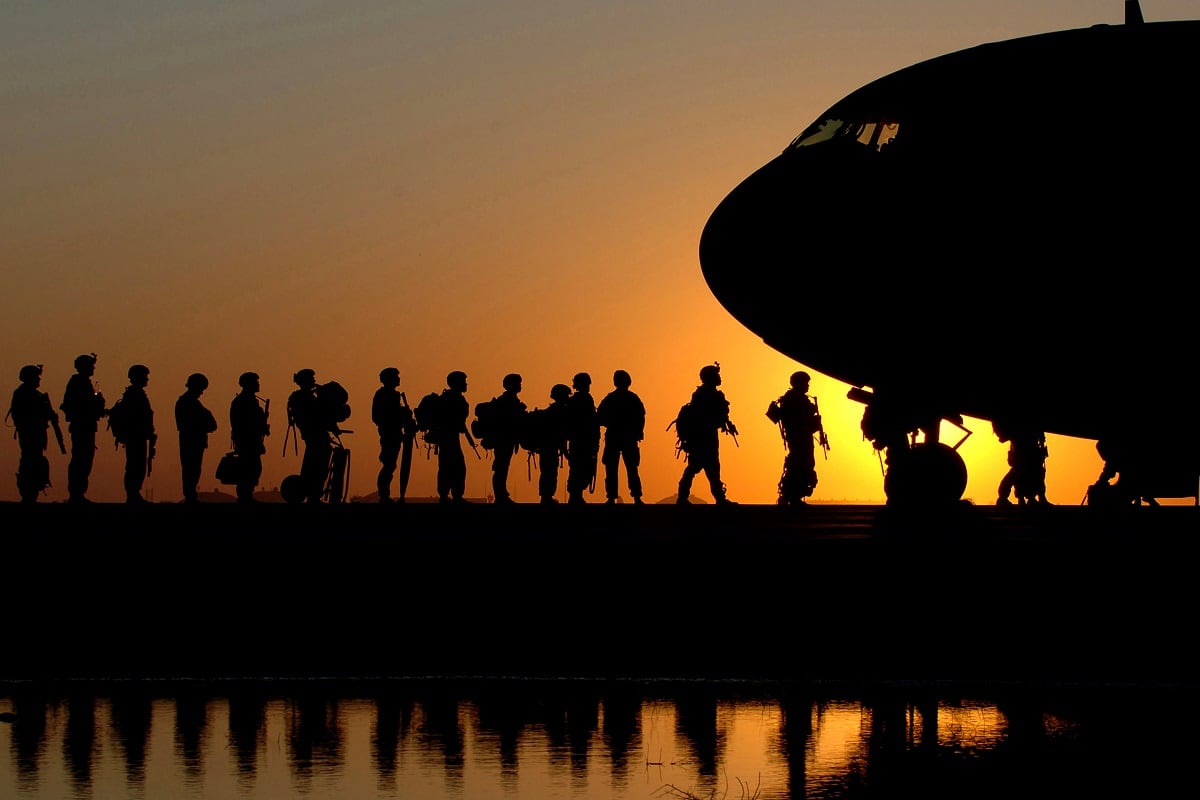
The symposium included dozens of representatives from military groups with cold weather or mountain warfare backgrounds, and from all the services, Eifler said.
The hope is that this “small populace” within units spread across the services will be ambassadors for preparing units for the demands of cold weather and mountain warfare.
By bringing together the various military groups and dozens of civilian equipment vendors, participants had a chance to share “best practices” and look at capability gaps and gear solutions, Eifler said.
RELATED
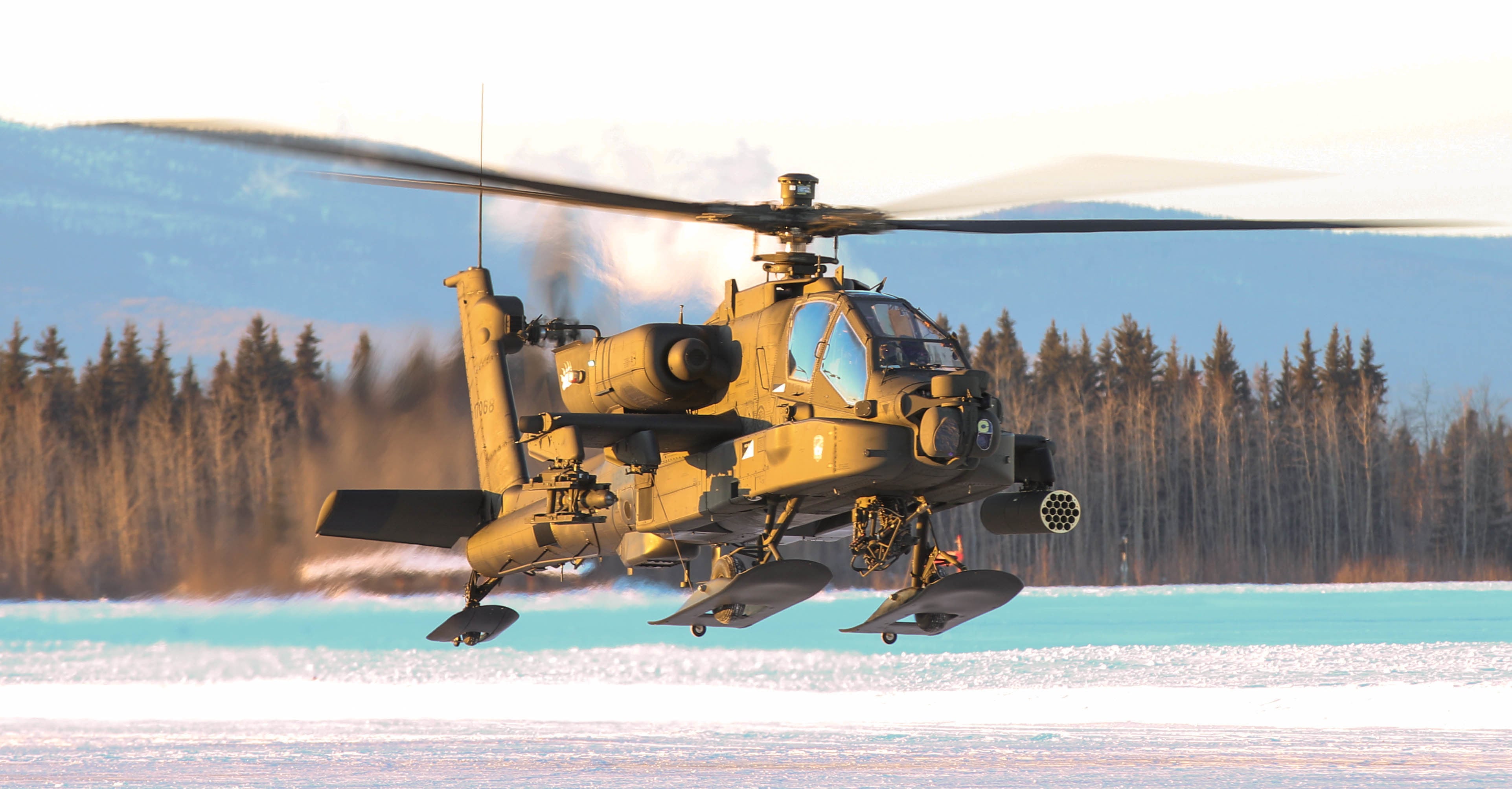
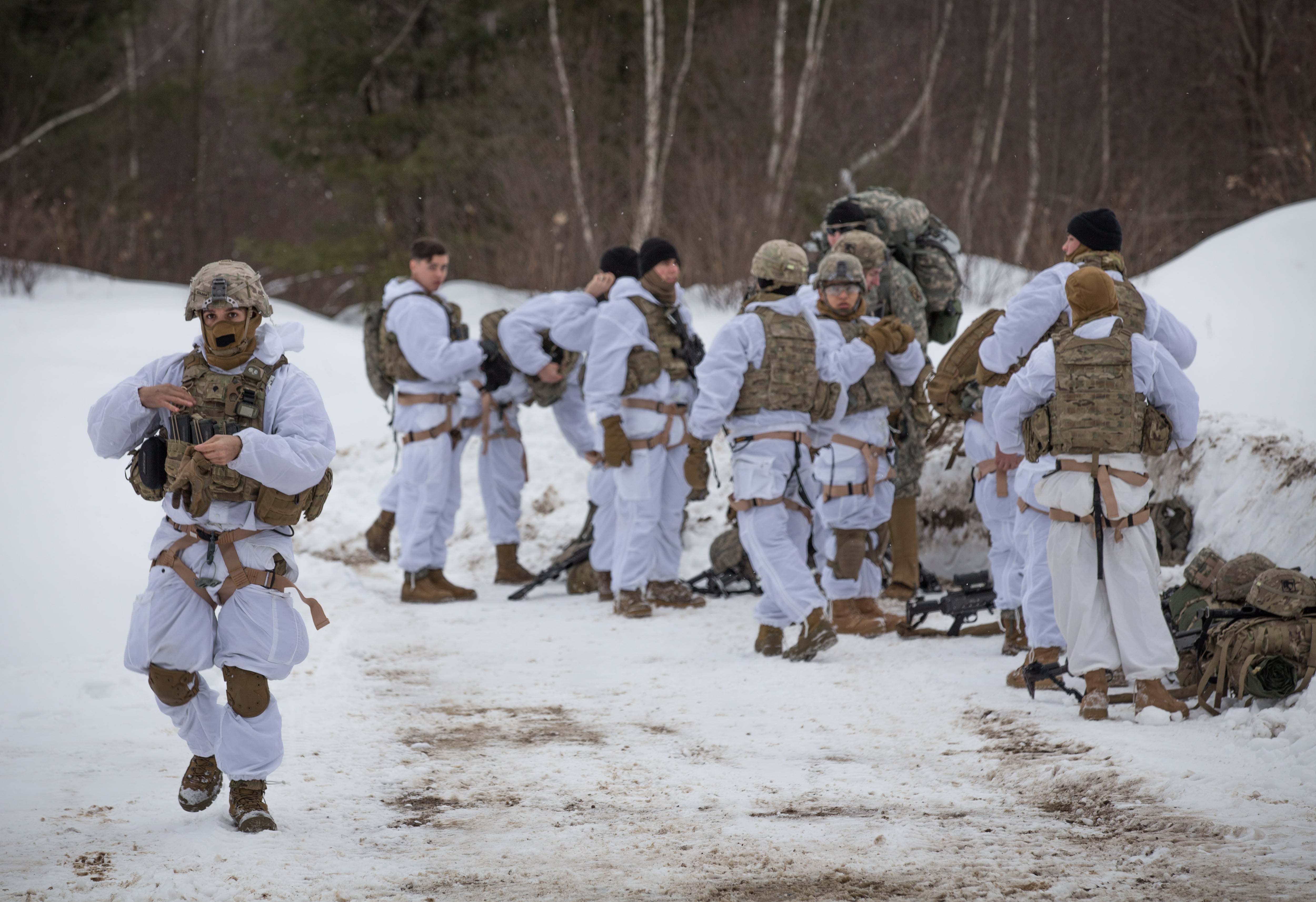
New gear
In recent weeks, 10th Mountain soldiers have been out in the snow training with new gloves, headgear, socks, gaiters, parkas, trousers and sleds and fielding the Army’s newest skis.
That’s the equipment side of the equation, which focuses on “face, hands and feet,” Bryan said.
The new skis are shorter and wider, built more like cross-country skis rather than downhill skis, Eifler said, but can be used for both.
Bryan said the purpose of the new skis is for a soldier with no experience to strap on the equipment to his or her cold weather boot and be able to maneuver within a half hour.
Army units in Alaska, Vermont and Italy are also fielding the new skis, he said.
There will be a competition among Light Fighter School cadre in the coming weeks to showcase the new skis’ capabilities, he said.
But fighting in the cold takes more than just gear, Eifler said.
He recounted, as an example, a training event with soldiers from a Colorado National Guard unit and allies in Slovenia. Those Colorado soldiers were used a cold but dry environment.
During training in Slovenia, the troops were constantly wet due to the weather conditions, and the techniques they’d perfected in a dry cold weather environment didn’t work.
The conditions sapped energy and morale, effecting the mission.
Eifler described how a young lieutenant said one of his soldier’s feared he might die on a training mission simply due to the conditions.
“That’s a real-life lesson,” Eifler said. “The fight in mountainous terrain is probably the most difficult of all the terrains.”
RELATED
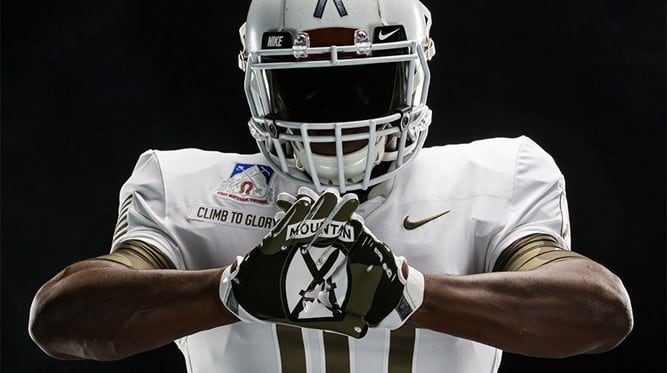
Eifler offered fundamental advice for soldiers facing such environments: be mentally and physically prepared.
“You’ve got to be familiar with how much water to use at this altitude, the temperature, clothing needed, heat,” Eifler said. “If someone’s not wearing the right equipment, they’re going to become the weakest link.”
Eifler admitted that while some parts of the division have done winter and mountain training for years, changes in Army formations and deployment demands have spread the division across 14 countries. The division headquarters also is preparing for a division headquarters deployment to Iraq.
This has made the division a “mountain” division in name only.
But new gear, training and events such as the symposium are helping to change that, he said.
“We’re trying to put the mountain back into 10th Mountain,” Eifler said.
Todd South has written about crime, courts, government and the military for multiple publications since 2004 and was named a 2014 Pulitzer finalist for a co-written project on witness intimidation. Todd is a Marine veteran of the Iraq War.
